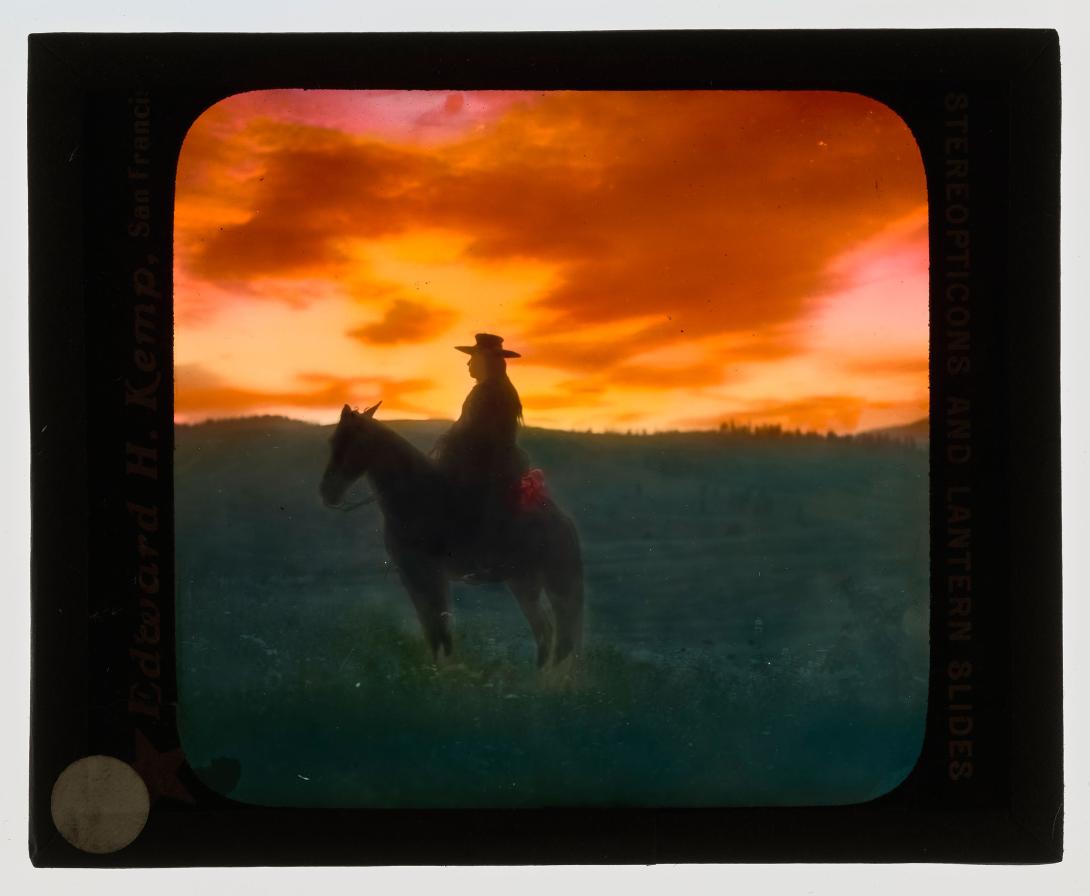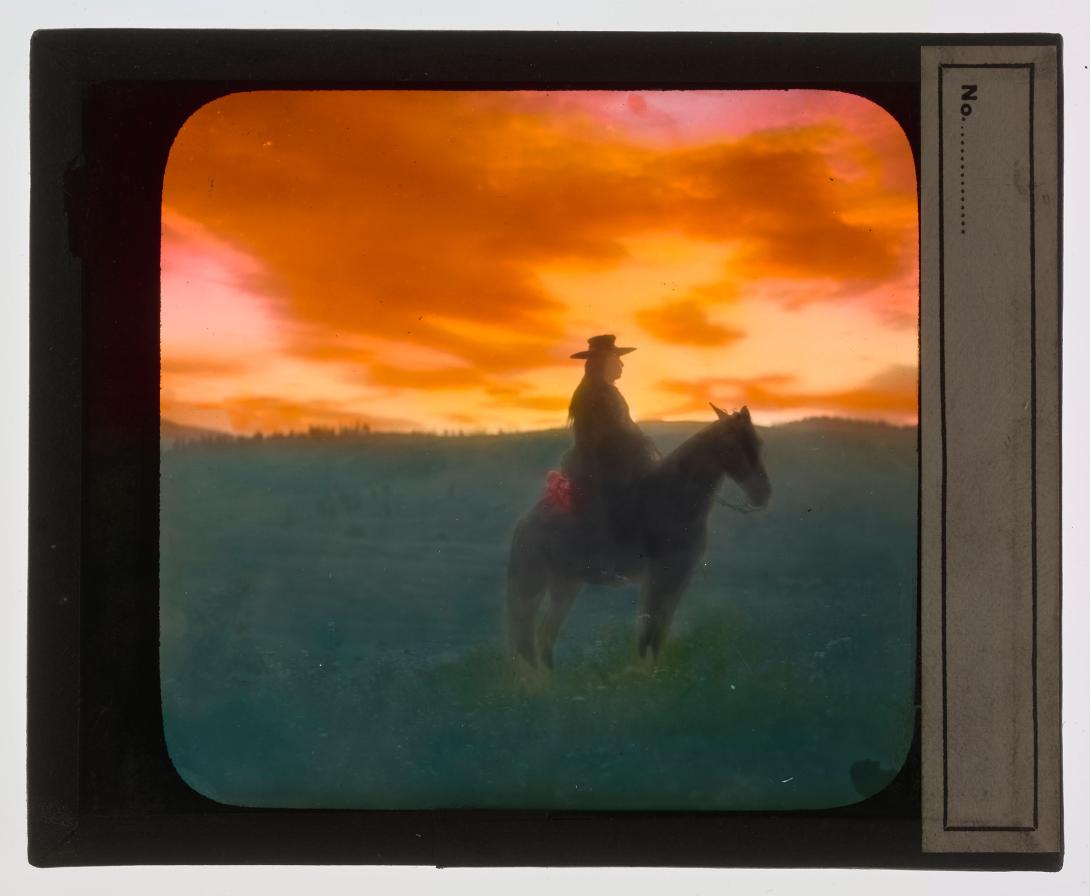

BIB_ID
220384
Accession number
ARC 1176.223
Creator
Edward S. Curtis
Creator date
1868–1952
Object title
A Native American man on horseback
Summary
A Native American man seated on horseback wearing a hat, seen in profile.
Created
ca. 1910
Printed/Manufactured
San Francisco : Edward H. Kemp, ca. 1910
In note
Edward S. Curtis lantern slides, 1898-1926.
Place
United States California San Francisco, manufacture place.
Description
1 lantern slide : photograph on glass, hand colored ; 3 1/4 x 4 inches (lantern slide format)
Notes
Title supplied by cataloger.
In cardboard frame printed with the name of the manufacturer: Edward H. Kemp, San Francisco / Lantern Slide Specialist.
Forms part of a collection of lantern slides by Curtis (ARC 1176).
Artist
Catalog link
Classification
Department

The Morgan Library & Museum holds a unique collection of over 400 lantern slides by photographer Edward S. Curtis (1868-1952). Beginning in 1906, J. Pierpont Morgan (1837-1913) funded the fieldwork for Curtis's twenty-volume book project, The North American Indian (1907-1930), for which Curtis photographed individuals from over eighty Indigenous communities living west of the Mississippi and Missouri Rivers. The series is much more than a set of photographs created by one individual, as Curtis worked alongside a rotating team of ethnologists and Native American assistants. The financial arrangement with Morgan left Curtis responsible for selling subscriptions to cover the costs of printing. As part of his efforts to raise interest in the project, Curtis toured the country giving lantern slide lectures. Unlike the monochromatic photogravures that illustrate Curtis's well-known publication, the colorful lantern slides display an innovative use of chemical toning and hand-applied dyes.
This slide, depicting a Native American whose name and tribal affiliation remain unidentified, was hand-colored after the photograph was developed on the glass slide. Multiple colors could be painstakingly applied by hand to bring life to the images. This could be quite a time consuming process, particularly where many different colors were used. Before hand coloring, the slide was soaked in water and ammonia to ensure a clean surface. Different media used to add pigment to the slides included oil, varnish, watercolor, and aniline dyes. It was advisable to work with lighter tints first, building up color with several washes of a dilute tint. The goal was for the colors to be vibrant, but transparent enough to allow light to pass through the slide when projected. The slide would rest in a frame set up at an angle with a blank sheet of paper behind it to allow the colorist to see the colors as they were applied.